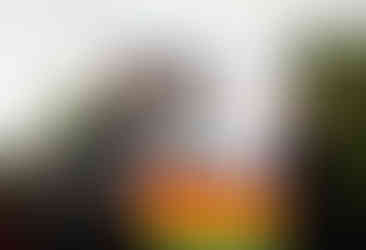Art + Activism: Rob Ferrell
- photosbythomas3

- Jun 26, 2020
- 3 min read
Updated: Jul 29, 2020
Recently, we have seen a lot of art being used to describe the Black Lives Matter movement and protests happening throughout the world. From photographs, to paintings, to graphic designs, to murals... art has been an important component to building narratives around this movement.
At any protest you will see artists marching the streets as well as mobilizing and organizing behind the scenes. Not only is it important to continue to do our part in the fight for justice, but it is also important to recognize, encourage, and support those that are already doing the work. So, for the next few weeks I will be highlighting artists and creatives that are making an impact for Black people, Black artists, and utilizing their platforms to fight for justice.
The first artist I will be highlighting is photographer and organizer Rob Ferrell. I was first introduced to Rob and his work during a show at Goucher College entitled Anatomy of Livign Color in which Rob displayed portraits of activists and organizers. The way he captured each person really normalized the extraordinary people that are on the ground making the Black liberation movement go! I have been in awe of Rob's work since then and I am honored to share this interview with you all:

1. How do you use art as activism?
I use my camera to document the Movement for Black Lives through archival photography of internal meetings, events, and protests, as well as making fine art portraits of organizers and leaders within the movement. I also use my position as an organizer and artist to bridge the gap between radical movements and the art world.
2. Why is it important for you to use art as activism?
The arts can and should be a central vehicle to deliver the messaging of radical movements. Art can make complex political ideas accessible to more people, and it can deliver the message in a way that is charged with emotion and feeling. I think we are starting to see this today, with the wave of murals being painted on city streets across the country (Black Lives Matter, Defund the Police, etc.). Activist Art also becomes part of our cultural legacy.
I envision my photographic archive being able to tell the story of our movement long after I’m gone to future generations.
Here are some of Rob's images below:
3. How would you encourage or suggest other creatives use their art/artistic talents for activism?
I want to see artists break out of an individual mindset of making different or better personal work and start to align themselves with collective action being taken by communities. The way to do that is to build deeper relationships with grassroots community-based organizations doing the work in the trenches, and offer your time and skills. Just a few examples of what this could look like: painting banners for protests or to be dropped from buildings/highways, designing organization’s flyers, painting murals or street art that aligns with the messaging and demands of grassroots organizations, offering your studio as a space to meet or work on these arts projects together, offering raw materials like paint, canvas, paper, just to name a few. With more artists involved, our movement will become more visually compelling and engaging with larger audiences.
4. What are some ways to support you and/or a cause that you are passionate about?
I am passionate about working towards liberation for all Black people. A key component to that is the abolition of Police and prisons, and the first step is to defund them. Call and email your city council rep and state delegates to demand a redirection of your tax dollars from police to the communities that need it most. Check out to my organization at http://www.organizingblack.com for more ways that you can help.
Rob is an amazing artist that is on the ground making a difference. To learn more about Rob and what he's about, make sure to follow Rob on Instagram at: @bmore_radical.












Comments